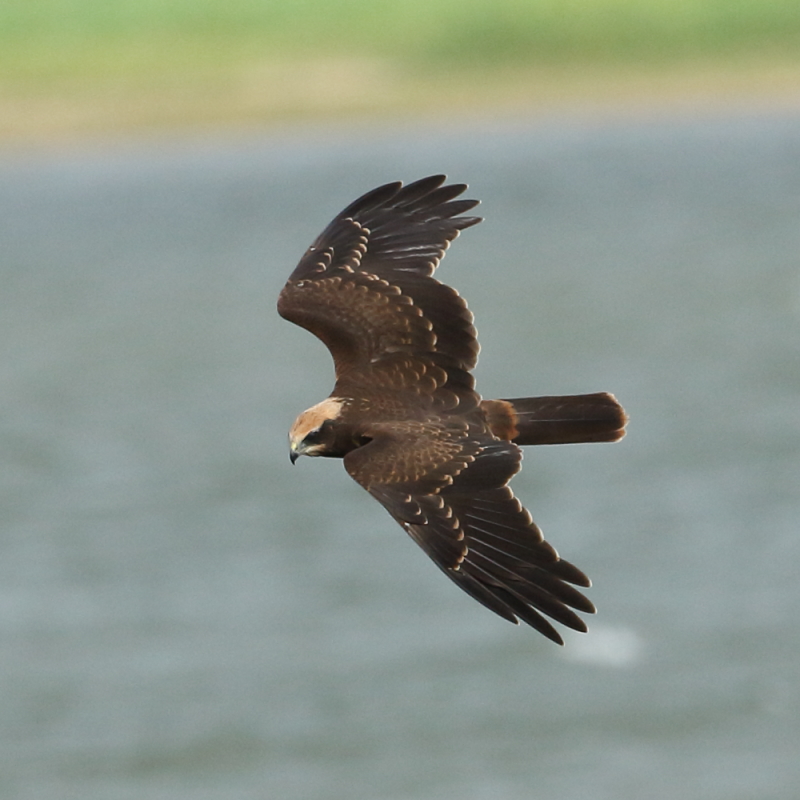Blagdon Lake Birds
Summary of the Year 2020
The covid-19 pandemic that led to the lake being closed from the end of March until June was the undoubted story of the year. As a consequence, birding was limited at that key time for Spring migrants. Nevertheless, the year turned up a reasonable variety of species, thanks in no small part to the low water level from late summer through to December. There is no doubt that Blagdon was the poor relation in terms of local rarities, compared with Chew Valley Lake and Cheddar Reservoir, but there were a few welcome sightings. The overwhelming disappointment of 2020 was the behaviour of (trespassing) visitors who descended on the site during and after the first lockdown, and then, to a lesser extent, for the remainder of the year. / to be continued

Site year list to 31st December (records by bird wardens Mark Hynam & Nigel Milbourne, plus those reported):
Categories A, B and C
- Red-legged Partridge* (25th September)
- Pheasant (1st January)
- Canada Goose (1st January)
- Greylag Goose (15th January)
- Mute Swan (1st January)
- Bewick's Swan (27th November)
- Egyptian Goose (19th January)
- Shelduck (7th March)
- Garganey (18th May)
- Shoveler (1st January)
- Gadwall (1st January)
- Wigeon (1st January)
- Mallard (1st January)
- Pintail (1st January)
- Teal (1st January)
- Red-crested Pochard*
- Pochard (1st January)
- Tufted Duck (1st January)
- Scaup (8th March per Andy Mears)
- Common Scoter (26th June)
- Goldeneye (1st January)
- Goosander (2nd January)
- Ruddy Duck (1st November)
- Nightjar [Subject to acceptance by AOG Rarities Committee] (18th July)
- Swift (19th April)
- Cuckoo (22nd April)
- Feral Pigeon (7th January)
- Stock Dove (16th April)
- Woodpigeon (1st January)
- Collared Dove (1st January)
- Water Rail (1st January)
- Moorhen (1st January)
- Coot (1st January)
- Little Grebe (1st January)
- Great Crested Grebe (1st January)
- Slavonian Grebe (14th March per Paul Williams)
- Oystercatcher (21st June)
- Avocet (19th July)
- Lapwing (11th January)
- Golden Plover* (7th October)
- Ringed Plover (27th April)
- Little Ringed Plover (20th June)
- Black-tailed Godwit (27th July)
- Turnstone (19th July)
- Ruff (11th July)
- Curlew Sandpiper (25th September)
- Sanderling (31st October)
- Dunlin (1st May)
- Little Stint (4th August)
- Snipe (2nd January)
- Common Sandpiper (7th January)
- Green Sandpiper (26th June)
- Redshank (20th June)
- Wood Sandpiper (7th August)
- Greenshank (1st August)
- Black-headed Gull (1st January)
- Little Gull (4th May)
- Mediterranean Gull (26th January)
- Common Gull (1st January)
- Great Black-backed Gull (1st January)
- Herring Gull (1st January)
- Yellow-legged Gull (23rd February per Andy Mears)
- Lesser Black-backed Gull (1st January)
- Common Tern (14th April)
- Arctic Tern (24th August)
- Great Northern Diver [Subject to acceptance by AOG Rarities Committee] (29th October)
- Cormorant (1st January)
- Little Bittern (17th May)
- Cattle Egret (31st July)
- Grey Heron (1st January)
- Great White Egret (7th January)
- Little Egret (6th May)
- Osprey (26th March per Bristol Water Fisheries team)*
- Sparrowhawk (1st January)
- Marsh Harrier (6th March)
- Red Kite (22nd April)
- Buzzard (3rd January)
- Barn Owl (6th January)
- Tawny Owl (1st January)
- Kingfisher (1st March)
- Great Spotted Woodpecker (1st January)
- Green Woodpecker (1st January)
- Kestrel (6th January)
- Hobby (25th April per Melanie Patch)
- Peregrine (10th March)
- Jay (1st January)
- Magpie (1st January)
- Jackdaw (1st January)
- Rook (1st January)
- Carrion Crow (1st January)
- Raven (21st January)
- Coal Tit (1st January)
- Blue Tit (1st January)
- Great Tit (1st January)
- Skylark (11th October)
- Sand Martin (9th March)
- Swallow (4th April)
- House Martin (13th April)
- Cetti's Warbler (17th May)
- Long-tailed Tit (1st January)
- Willow Warbler (5th April)
- Chiffchaff (1st January)
- Sedge Warbler (3rd May)
- Reed Warbler (16th April)
- Blackcap (18th March)
- Garden Warbler (9th April per Nigel Crocker)
- Lesser Whitethroat (27th April)
- Whitethroat (3rd May)
- Goldcrest (1st January)
- Wren (1st January)
- Nuthatch (1st January)
- Treecreeper (1st January)
- Starling (1st January)
- Blackbird (1st January)
- Fieldfare (1st January)
- Redwing (1st January)
- Song Thrush (1st January)
- Mistle Thrush (1st January)
- Spotted Flycatcher (17th May)
- Robin (1st January)
- Whinchat (25th September)
- Stonechat (1st March)
- Wheatear (20th August)
- House Sparrow (5th April)
- Dunnock (1st January)
- Grey Wagtail (21st January)
- Pied Wagtail (6th March) & White Wagtail (9th August)
- Meadow Pipit (11th January)
- Rock Pipit* (4th October)
- Chaffinch (1st January)
- Bullfinch (7th January)
- Greenfinch (16th April)
- Linnet (6th October)
- Lesser Redpoll (7th January)
- Goldfinch (1st January)
- Siskin (25th October)
- Reed Bunting (7th March)
Categories D and E
- Bar-headed Goose (17th October)
* species reported to me